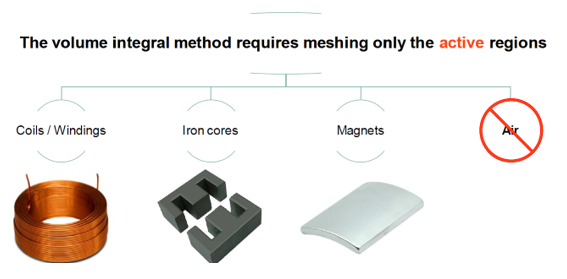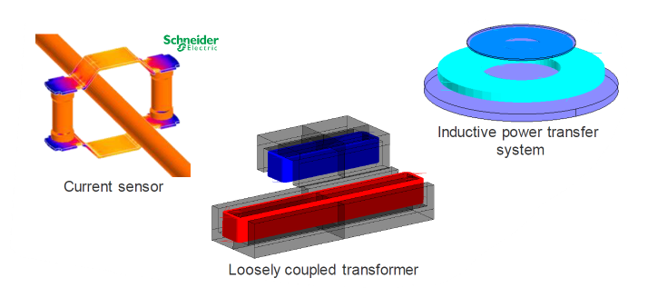Introduction of Magnetostatic Integral
Introduction
Magnetostatic Integral solution is based on the Volume Integral Method (VIM), which is known to be advantageous in the case of specific problems, such as devices immersed in unbounded, inactive (i.e., source-free) volume regions such as air or vacuum.
A key aspect of the Volume Integral Method is that it does not require representing or meshing the air around the modeled device nor imposing a boundary condition at infinity. Consequently, the Infinite Box typically used in the classical Finite Element Method (FEM) solution is not required in projects based upon this integral method. When Motion LBC is used, SimLab does not have to re-mesh the air regions in VIM projects containing moving parts at each computation step. Thus, significant improvements in computation time may be observed under such conditions.

When compared to FEM method, VIM method generally provides accurate Magnetostatic solutions using relatively coarser meshes. On the other hand, the VIM approach leads to the assembly and resolution of a non-sparse system of equations, which require efficient management of numerical memory and specialized solvers. These techniques are conveniently implemented, and a user familiar with the classical Magnetostatic FEM solution will not notice any significant change in the workflow.
Typical devices that can be efficiently modeled with the VIM-based approach include electromagnetic sensors and other similar devices. Rotating electric machinery and other electromagnetic devices characterized by narrow air-gaps and closed magnetic circuits are not among the recommended applications.

MSIM Workflow
A graphic view of the Magnetostatic Integral workflow with functionalities possibles is presented below.
All functions are available in the different ribbon bars Geometry, Mesh, Analysis, ...
The content of each ribbon is adapted depending on the active solution.

Differently from the classical FEM applications in Flux, no action such as creating an Infinite Box or assigning boundary conditions is required to model an unbounded domain. The user must not describe air regions surrounding the active parts of the device nor include symmetries or periodicities in his project.
Main Magnetostatic Integral Limitations
Some functionalities of Magnetostatics FEM solution are not supported yet for Magnetostatic Integral solution in this version in SimLab:
- The project must contain only volume regions.
- Only linear hard magnetic properties are supported.
- Symmetry and periodicity are not supported.
- It is mandatory to define an unit system before defining a Magnetostatic Integral solution. Without an unit system, the solving will not be carried out.
- Mesh limitations:
- Pyramid mesh type is not supported for this version.
- 2nd order mesh is currently not allowed.